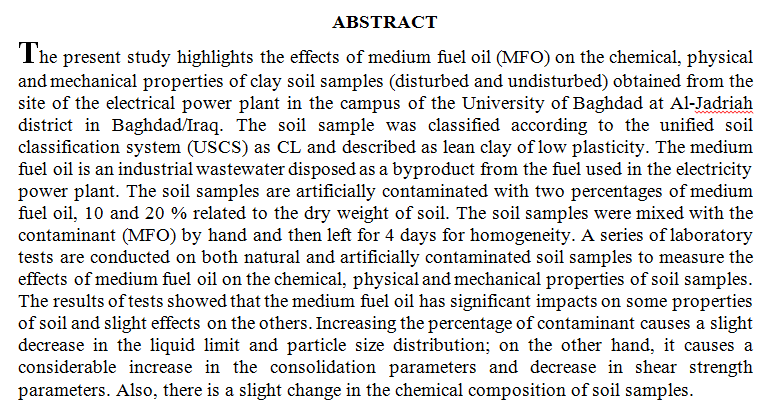
Zinc oxide (ZnO) nanostructures were synthesized through the hydrothermal method at various conditions growth times (6,7 and 8 hrs.) and a growth temperature (70, 90, and 100 ºC). The prepared ZnO nanostructure samples were described using scanning electron microscopy (SEM) and X-ray diffractometer to distinguish their surface morphologies and crystal structures. The ZnO samples were confirmed to have the same crystal type, with different densities and dimensions (diameter and length). The obtained ZnO nanostructures were used to manufacture gas sensors for NO2 gas detection. Sensing characteristics for the fabricated sensor to NO2 gas were examined at different operating temperatures (180, 200, 220, and 240) ºC with a low gas concentrati
... Show MoreIn southern Iraq, the Yamama Formation has been a primary carbonate resource since the Lower Cretaceous era. This study covers Siba Field, which is located in southeastern Iraq. This paper will be devoted to a YC unit of study. The most crucial step in reservoir management is petrophysical characterization. The primary goal of this research is to assess the reservoir features and lithology of the Yamama (YC) Formation in the Siba region. Accessible excellent logs include sonic, density, neutron, gamma-ray, SP, and resistivity readings. The Interactive Petrophysics (IP4.4) program examined and estimated petrophysical features such as clay volume, porosity, and water saturation. The optimum approach was the neutron density and clay vo
... Show MoreDrag has long been identified as the main reason for the loss of energy in fluid transmission like pipelines and other similar transportation channels. The main contributor to this drag is the viscosity as well as friction against the pipe walls, which will results in more pumping power consumption.
The aim in this study was first to understand the role of additives in the viscosity reduction and secondly to evaluate the drag reduction efficiency when blending with different solvents.
This research investigated flow increase (%FI) in heavy oil at different flow rates (2 to 10 m3/hr) in two pipes (0.0381 m & 0.0508 m) ID By using different additives (toluene and naphtha) with different concent
... Show MoreFiber reinforced polymer composite is an important material for structural application. The diversified application of FRP composite has taken center of attraction for interdisciplinary research. However, improvements on mechanical properties of this class of materials are still under research for different applications. In this paper we have modified the epoxy matrix by Al2O3, SiO2 and TiO2 nano particles in glass fiber/epoxy composite to improve the mechanical and physical properties. The composites are fabricated by hand lay-up method. It is observed that mechanical properties like flexural strength, hardness are more in case of SiO2 modified epoxy composite compare to other nano
... Show MoreThe optical properties for the components CuIn(SexTe1-x)2 thin films with both values of selenium content (x) [0.4 and 0.6] are studied. The films have been prepared by the vacuum thermal evaporation method with thickness of (250±5nm) on glass substrates. From the transmittance and absorbance spectra within the range of wavelength (400-900)nm, we determined the forbidden optical energy gap (Egopt) and the constant (B). From the studyingthe relation between absorption coefficient (α) photon energy, we determined the tails width inside the energy gap.
The results showed that the optical transition is direct; we also found that the optical energy gap increases with annealing temperature and selenium content (x). However, the width of l
 (30)
(30)
 (29)
(29)
 (34)
(34)
 (33)
(33)
Background: Impression materials, impression trays, and poured stone cast have been said to be the main source of cross infection between patients and dentists. However, it was observed that disinfection of the impression is not performed systematically in routine dental practice. Disinfection of alginates either by immersion or spray technique was found to cause dimensional inaccuracies, although with proper disinfection of alginates there were small dimensional changes. A variety of fluoride releasing products designed for topical use is currently available. Following their use, varied amount of fluoride is systemically absorbed depending on the fluoride concentration and the manner of its use. The objective of this study was to evaluate
... Show MoreBackground: Dental stone casts come into contact with impression materials and becomes susceptible to cross contamination from saliva and blood. This study was done to evaluate the physical and mechanical properties of dental stone type IV after treatments with various disinfecting agents and regimes (methods). Materials and Methods: Type IV dental stone and different types of disinfecting agents were used and divided into seven groups: G1: dental stone without disinfection (control group), G2: dental stone mixed with silver nitrate powder 0.5% , G3: dental stone mixed with silver nitrate powder 1%, G4: dental stone mixed with copper sulfate powder 0.5%, G5: dental stone mixed with copper sulfate powder 1% ,G6: dental stone immersed in prop
... Show MoreAbstract : Silicone elastomer is widely used as the material of choice for fabricating maxillofacial prosthesis. However, silicone properties are far from ideal; low tear strength, low tensile strength and insufficient elasticity are the most undesirable properties. The purpose of this study was to evaluate the effect of addition of nano SiO2filler on tear strength, tensile strength, elongation at break, hardness and color of Cosmesil M-511 HTV maxillofacial silicone elastomer. Nano SiO2was added to the silicone base in concentrations of 4%, 5% and 6% by weight. Silicone with 0% nano filler served as a control. Tear test was done according to ISO 34-1. Tensile and elongation test was done according to ISO 37. Shore A hardness test was done
... Show More (9)
(9)
